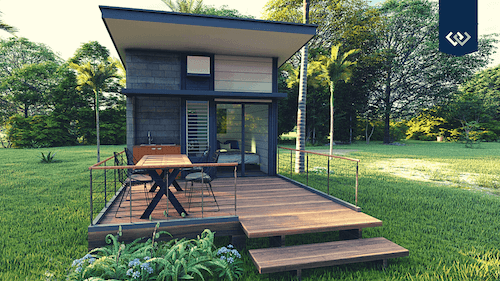From efficiency to affordability, many people are drawn to the idea of living in a tiny home. Tiny houses combine maximizing space with living minimally. Although the concept seems simple, there’s more to this lifestyle than you may think.
Minimalist Living
The tiny home movement combines mindfulness, environmentalism, and minimalism into an efficient lifestyle. For example, since the living space is only about 400 square feet, a tiny home’s windows can help heat and light its rooms, resulting in a small carbon footprint. In fact, these homes produce about 2,000 pounds of CO2 emissions each year versus the average American home, which produces about 28,000 pounds of CO2 emissions per year.
Additionally, due to its tight quarters, downsizing and decluttering are key components. Limited space leaves little room for furniture and other items. This encourages using space purposefully and creatively.
While some may be wary of giving up certain things, Seattle architects like Ryan Smith of Modern Shed say that it’s all about doing it the right way. “Living small could mean what’s left is the most important part of the experience.” Smith says his team designs these structures to “solve needs for space”. Smith has designed hundreds of small places that have served as summer homes, meditation rooms, offices, and winter cabins. Any of their leftover materials are used on the next project so there’s very little waste, and extra wood is used to heat the space.
Affordable Housing
Another advantage of living in a tiny house rather than a traditional single-family home is avoiding thousands of dollars of debt. The “tiny” alternative provides a big financial incentive. This appeals to retirees looking to downsize and live simply as well as young adults, especially since the average college student loan debt is about $37,000. Most tiny homes can be built within a budget of $50,000. There are some companies that even sell tiny house kits so you can build your own home. Alternatively, there are tiny home designers and architects who will draw a custom blueprint for you.
Additional Benefits
A tiny home can serve as an accessory dwelling unit (ADU) or an in-law apartment. It can also serve as a customized home for someone with special needs, a private living space for a caregiver, or a high-quality mobile home (some remain on wheels), enabling more opportunities to travel and see family. Additionally, a homeowner can rent out their large home while living in a tiny home on their property to save money, reduce their energy bills, and live a low-maintenance life while still enjoying their property and neighborhood.
Tiny Home Residents
Though this may seem like an obvious choice for millennials, there are many tiny home residents who are people age 50 and up. Some researchers expect this to increase with the rising number of baby boomers and Generation X retiring within the next decade.
In a recent study done with 80 tiny home occupants living in Washington, California, Oregon, and Texas, 38% were over the age of 50. In addition, 78% of tiny home residents owned their home compared to 65% of traditional homeowners. 55% of these residents had more savings than the average American, with a median of $10,972 in the bank.
According to Business Insider, Washington, Oregon, and California are among the most popular states for tiny living. Interestingly, cities that are known for the arts have high concentrations of tiny home residents. San Diego, Portland, and Seattle are popular places for tiny homeowners.
Learning from the Tiny Home Lifestyle
Although living in a tiny home may not be ideal for some, we can learn from those who enjoy this lifestyle. Most tiny houses have three areas: a kitchen, a bathroom, and a sleeping area. From storing dishes and spices to decorating each space – everything is done with care; every inch of space is utilized and appreciated.
Many residents practice releasing their dependence on material items. You might not be ready to do that, but decluttering is an important skill regardless of your home’s size. It is especially vital for those who are considering downsizing. Tiny homes also emphasize a greener way of living. You can move in that direction by composting, installing solar panels, and reducing your consumption of single-use plastic items. For more on this, check out these eco-friendly ideas.
 Facebook
Facebook
 X
X
 Pinterest
Pinterest
 Copy Link
Copy Link
